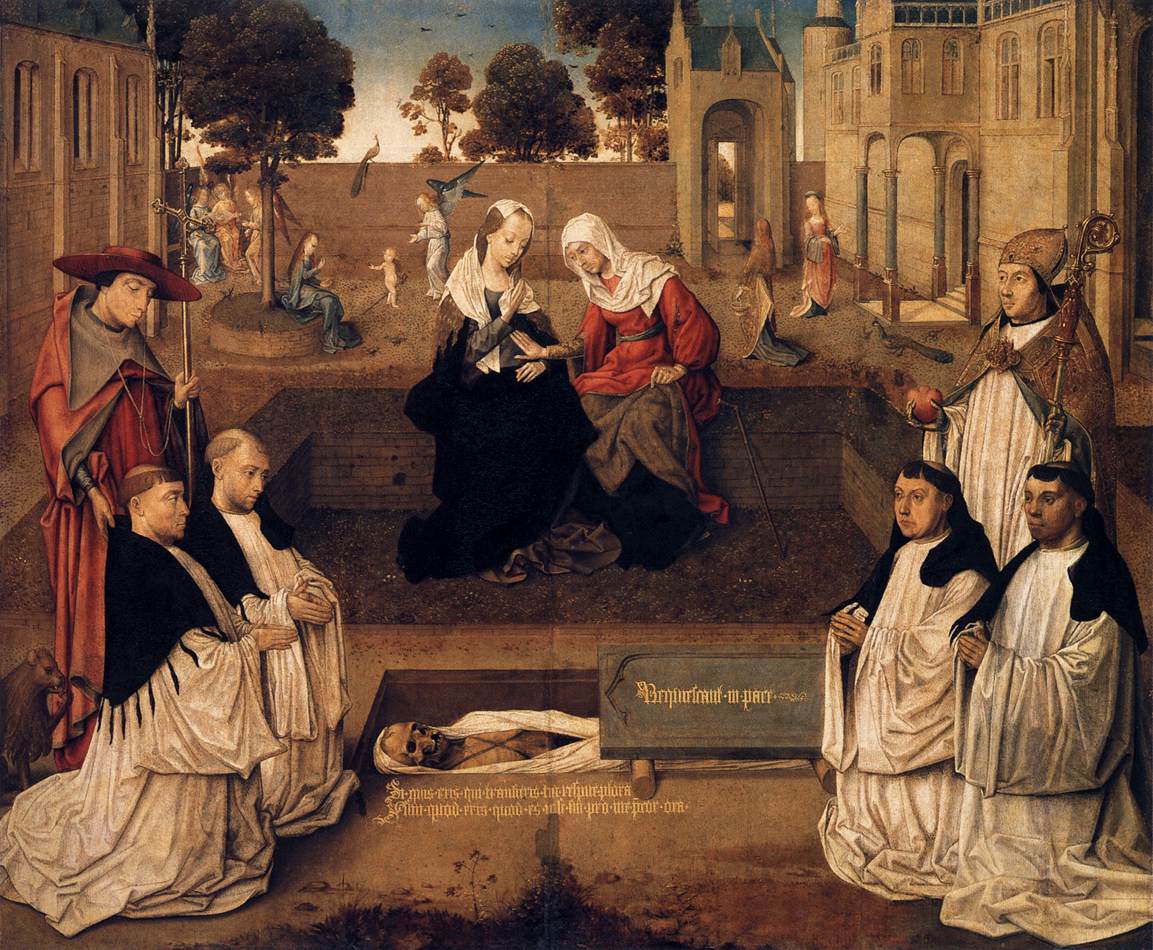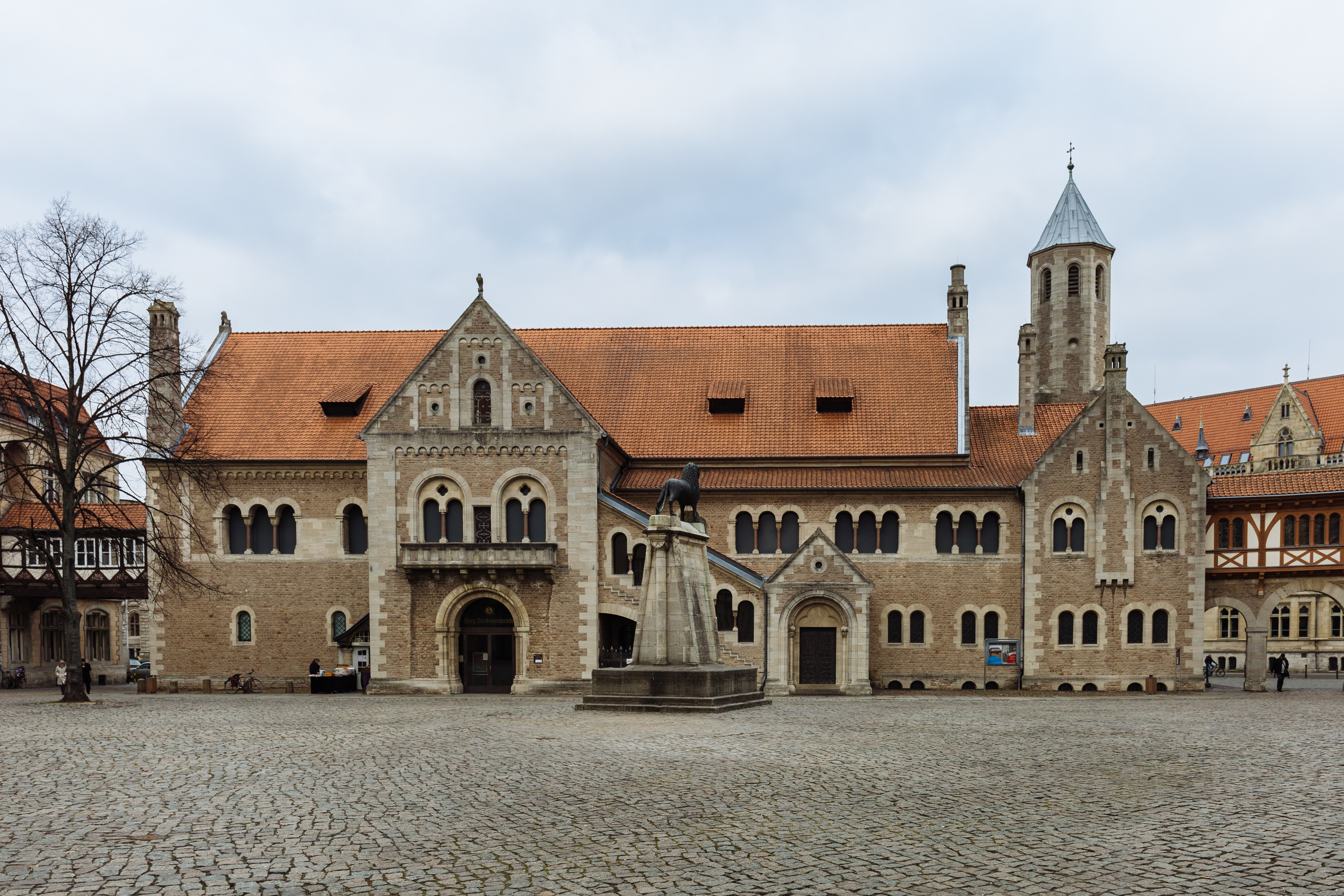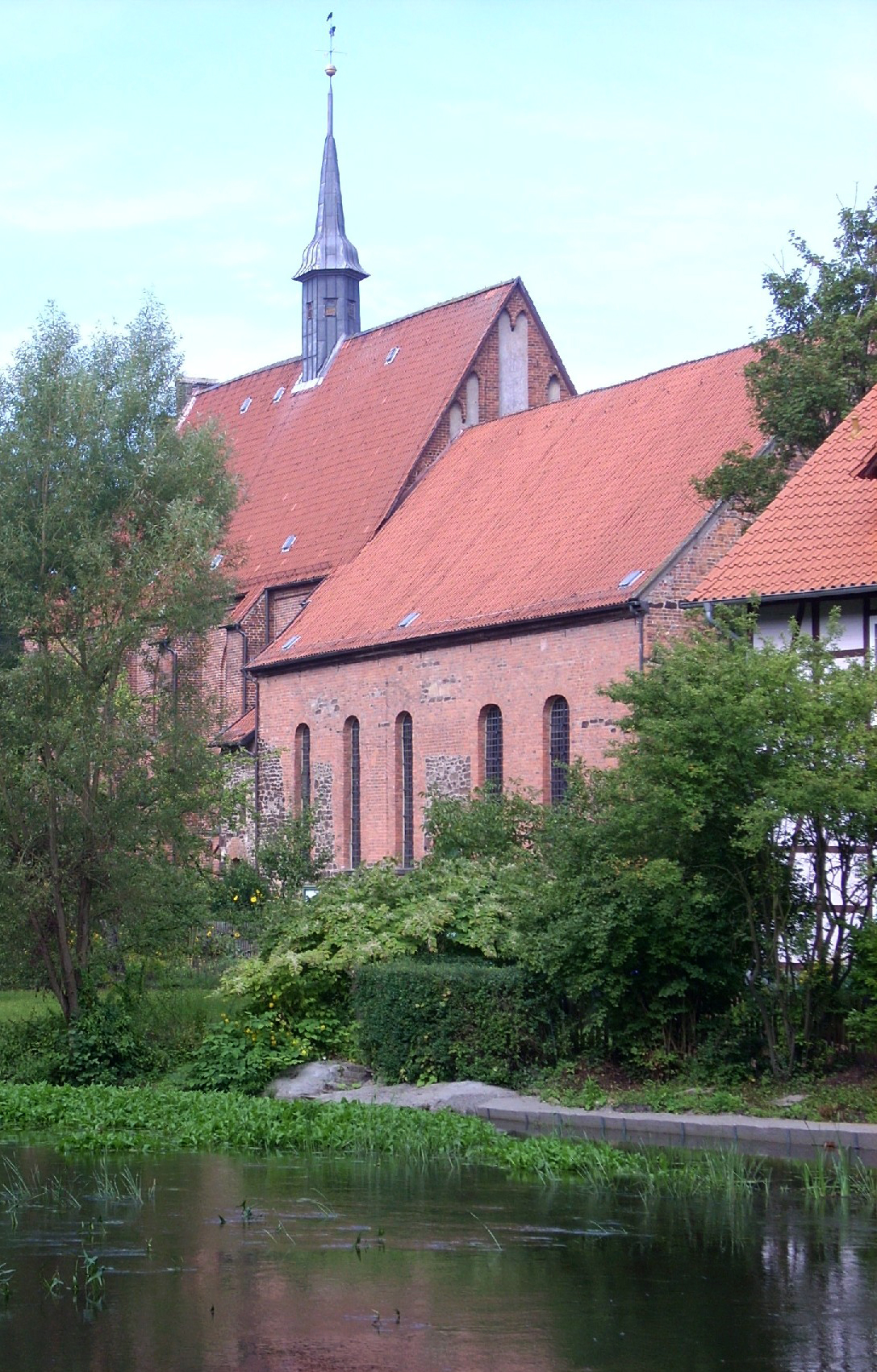|
Jan Busch
Johannes (or Jan) Busch (1399 – c. 1480) was a major reformer and provost of a community of Canons Regular. He was associated with the Brethren of the Common Life. He was born in Zwolle. He spent most of the last 40 years of his life visiting and inspecting monasteries and convents, including Escherde (1441), Brunswick, and Wienhausen Abbey, then a Cistercian nunnery, where he removed the abbess in 1469. He also wrote some substantial surviving works, including a chronicle of Windesheim. He died at Hildesheim Hildesheim (; or ; ) is a city in Lower Saxony, in north-central Germany with 101,693 inhabitants. It is in the district of Hildesheim (district), Hildesheim, about southeast of Hanover on the banks of the Innerste River, a small tributary of t .... References Further reading * * Augustinian canons 1399 births 1480 deaths People from Zwolle {{Netherlands-reli-bio-stub ... [...More Info...] [...Related Items...] OR: [Wikipedia] [Google] [Baidu] |
Provost (religion)
A provost is a senior official in a number of Christian denomination, Christian churches. Historical development The word (Latin for 'set over', from , 'to place in front') was originally applied to any ecclesiastical ruler or dignitary. It was soon more specifically applied to the immediate subordinate to the abbot of a monastery, or to the superior of a single Monk, cell, and it was defined as such in the Rule of St Benedict. The dean (Christianity), dean () was a similarly ranked official. Chrodegang of Metz adopted this usage from the Benedictines when he introduced the monastic organization of College (canon law), canon-law colleges, especially cathedral chapter, cathedral capitular colleges. The provostship () was normally held by the archdeacon, while the office of dean was held by the archpriest. In many colleges, the temporal duties of the archdeacons made it impossible for them to fulfil those of the provostship, and the headship of the chapter thus fell to the dean. ... [...More Info...] [...Related Items...] OR: [Wikipedia] [Google] [Baidu] |
Canons Regular
The Canons Regular of St. Augustine are Catholic priests who live in community under a rule ( and κανών, ''kanon'', in Greek) and are generally organised into Religious order (Catholic), religious orders, differing from both Secular clergy, secular canons and other forms of religious life, such as clerics regular, designated by a partly similar terminology. As religious communities, they have laybrothers as part of the community. At times, their Orders have been very popular: in England in the 12th century, there were more houses of canons (often referred to as an abbey or canonry) than monasteries of monks. Preliminary distinctions All canons regular are to be distinguished from canon (priest), secular canons who belong to a resident group of priests but who do not take religious vows, public vows and are not governed in whatever elements of life they lead in common by a historical rule. One obvious place where such groups of priests are required is at a cathedral, where ... [...More Info...] [...Related Items...] OR: [Wikipedia] [Google] [Baidu] |
Brethren Of The Common Life
The Brethren of the Common Life (, FVC) was a Roman Catholic pietist religious community founded in the Netherlands in the 14th century by Gerard Groote, formerly a successful and worldly educator who had had a religious experience and preached a life of simple devotion to Jesus Christ. They believed that Christianity should be practiced not only in formal religious settings, but also in everyday life, and they sought to promote a practical spirituality that emphasized personal piety and devotion. Without taking up irrevocable vows, the Brethren or Sisters banded together in communities, giving up their worldly goods to live chaste and strictly regulated lives in common houses, devoting every waking hour to attending divine service, reading and preaching of sermons, labouring productively such as by copying manuscripts, and taking meals in common that were accompanied by the reading aloud of Scripture: "judged from the ascetic discipline and intention of this life, it had few fe ... [...More Info...] [...Related Items...] OR: [Wikipedia] [Google] [Baidu] |
Zwolle
Zwolle () is a List of cities in the Netherlands by province, city and Municipalities of the Netherlands, municipality in the Northeastern Netherlands. It is the Capital city, capital of the Provinces of the Netherlands, province of Overijssel and the province's second-largest municipality, after Enschede, and has a population of 132,441 as of December 2023. Zwolle borders the province of Gelderland and lies on the eastern side of the River IJssel. History Archeology, Archaeological findings indicate that the area surrounding Zwolle has been inhabited for a long time. A Henge, woodhenge that was found in the Zwolle-Zuid suburb in 1993 was dated to the Bronze Age period. During the Roman era, the area was inhabited by Salian Franks. The modern city was founded around 800 CE by Frisians, Frisian merchants and troops of Charlemagne. Previous spellings of its name include the identically pronounced ''Suolle'', which means "hill" (cf. the English cognate verb "to swell"). This re ... [...More Info...] [...Related Items...] OR: [Wikipedia] [Google] [Baidu] |
Monasteries
A monastery is a building or complex of buildings comprising the domestic quarters and workplaces of monastics, monks or nuns, whether living in communities or alone ( hermits). A monastery generally includes a place reserved for prayer which may be a chapel, church, or temple, and may also serve as an oratory, or in the case of communities anything from a single building housing only one senior and two or three junior monks or nuns, to vast complexes and estates housing tens or hundreds. A monastery complex typically comprises a number of buildings which include a church, dormitory, cloister, refectory, library, balneary and infirmary and outlying granges. Depending on the location, the monastic order and the occupation of its inhabitants, the complex may also include a wide range of buildings that facilitate self-sufficiency and service to the community. These may include a hospice, a school, and a range of agricultural and manufacturing buildings such as a barn, a f ... [...More Info...] [...Related Items...] OR: [Wikipedia] [Google] [Baidu] |
Convent
A convent is an enclosed community of monks, nuns, friars or religious sisters. Alternatively, ''convent'' means the building used by the community. The term is particularly used in the Catholic Church, Lutheran churches, and the Anglican Communion. Etymology and usage The term ''convent'' derives via Old French from Latin ''conventus'', perfect participle of the verb ''convenio'', meaning "to convene, to come together". It was first used in this sense when the eremitical life began to be combined with the cenobitical. The original reference was to the gathering of mendicants who spent much of their time travelling. Technically, a monastery is a secluded community of monastics, whereas a friary or convent is a community of mendicants (which, by contrast, might be located in a city), and a canonry is a community of canons regular. The terms abbey and priory can be applied to both monasteries and canonries; an abbey is headed by an abbot, and a priory is a lesser depend ... [...More Info...] [...Related Items...] OR: [Wikipedia] [Google] [Baidu] |
Braunschweig
Braunschweig () or Brunswick ( ; from Low German , local dialect: ) is a List of cities and towns in Germany, city in Lower Saxony, Germany, north of the Harz Mountains at the farthest navigable point of the river Oker, which connects it to the North Sea via the rivers Aller (Germany), Aller and Weser. In 2024, it had a population of 272,417. The Braunschweig-Wolfsburg-Salzgitter region had 1.02 million residents including the cities Wolfsburg and Salzgitter, it is the second largest urban center in Lower Saxony after Hanover. The urban agglomeration of Braunschweig had a population of 551,000 with almost 45% having a migration background, making it the most diverse urban agglomeration in the whole Niedersachsen, state. The city consists of 37.5% immigrants (approximately 102,000) with a high amount of migrants coming from other European countries, Asia and Africa. 73% of the Germans residing in Braunschweig come from different parts of the country, particularly North Rhine West ... [...More Info...] [...Related Items...] OR: [Wikipedia] [Google] [Baidu] |
Wienhausen Abbey
Wienhausen Abbey or Convent () near Celle in Lower Saxony, Germany, is a community of Evangelical Lutheran women, which until the Reformation was a Cistercian Catholic nunnery. The abbey owns significant artworks and artifacts, including a collection of tapestries and the earliest surviving example of a type of eyeglasses. History The abbey was established in Wienhausen, from the town of Celle, on the bank of the Aller, in or about 1230 by Agnes von Landsberg, daughter-in-law of Henry the Lion, Duke of Saxony and Bavaria. According to the Wienhausen town chronicle, this was the relocation of a monastic foundation made 10 years previously on a site at Nienhagen several kilometers away, which was moved because it had been built on marshland. In 1233 the foundation of the nunnery here was officially confirmed by Konrad II of Riesenberg, bishop of Hildesheim, who transferred to the new abbey the archdeaconry church that had stood in Wienhausen since the mid 11th century, and the ... [...More Info...] [...Related Items...] OR: [Wikipedia] [Google] [Baidu] |
Cistercian Nunnery
Cistercian nuns are female members of the Cistercian Order, a religious order of the Catholic Church. History The Cistercian Order was initially a male order. Cistercian female monasteries began to appear by 1125. The first Cistercian monastery for women, Le Tart Abbey, was established at Tart-l'Abbaye in the Diocese of Langres (now Dijon) in 1125, by nuns from the Benedictine monastery of Juilly, and with the cooperation of Stephen Harding, abbot of Cîteaux. At Juilly, a dependency of Molesme Abbey, Humbeline, the sister of Saint Bernard of Clairvaux, lived and died.Herbermann, Charles, ed. (1913). " Cistercian Sisters". ''Catholic Encyclopedia''. New York: Robert Appleton Company. The Cistercian nuns of Le Tart founded daughter houses in Europe, including at Ferraque (1140) in the Diocese of Noyon, Blandecques (1153) in the Diocese of St-Omer, and Montreuil-les-Dames (1164) near Laon. Charity work was central to the activities of the Cistercian nunneries, and some ... [...More Info...] [...Related Items...] OR: [Wikipedia] [Google] [Baidu] |
Congregation Of Windesheim
The Congregation of Windesheim () is a congregation of Augustinian canons that regularly takes its name from its most important monastery, which was located at Windesheim in the Netherlands. The congregation was founded as an offshoot of the Brethren of the Common Life and played a considerable part in the reform movement within the Dutch and German Catholic Church in the century before the Protestant Reformation. History The Brethren of the Common Life, which did not strictly conform as an order or congregation, had become obnoxious to the mendicant friars and the object of their attacks. To remedy this, their founder, Gerard Groote, advised on his deathbed in 1384 that some of the brethren should adopt the rule of an approved Order. His successor, Florence Radewyns, carried this advice into effect. Six of the brethren, carefully chosen as specially fitted for the work, among them John, elder brother of Thomas à Kempis, were sent to the monastery of Eymsteyn (founded 1382 ... [...More Info...] [...Related Items...] OR: [Wikipedia] [Google] [Baidu] |
Hildesheim
Hildesheim (; or ; ) is a city in Lower Saxony, in north-central Germany with 101,693 inhabitants. It is in the district of Hildesheim (district), Hildesheim, about southeast of Hanover on the banks of the Innerste River, a small tributary of the Leine River. The Holy Roman Emperor Louis the Pious founded the Bishopric of Hildesheim in 815 and created the first settlement with a chapel on the so-called ''Domhügel''. Hildesheim is situated on the north–south Bundesautobahn 7, Autobahn 7, and hence is connected with Hamburg in the north and Austria in the south. With the Hildesheim Cathedral and the St. Michael's Church, Hildesheim, St. Michael's Church, Hildesheim became a UNESCO World Heritage Site in 1985. In 2015 the city and the diocese celebrated their 1200th anniversary. History Early years According to tradition, the city was named after its founder ''Hildwin''. The city is one of the oldest cities in Northern Germany, became the seat of the Bishopric of Hildes ... [...More Info...] [...Related Items...] OR: [Wikipedia] [Google] [Baidu] |






